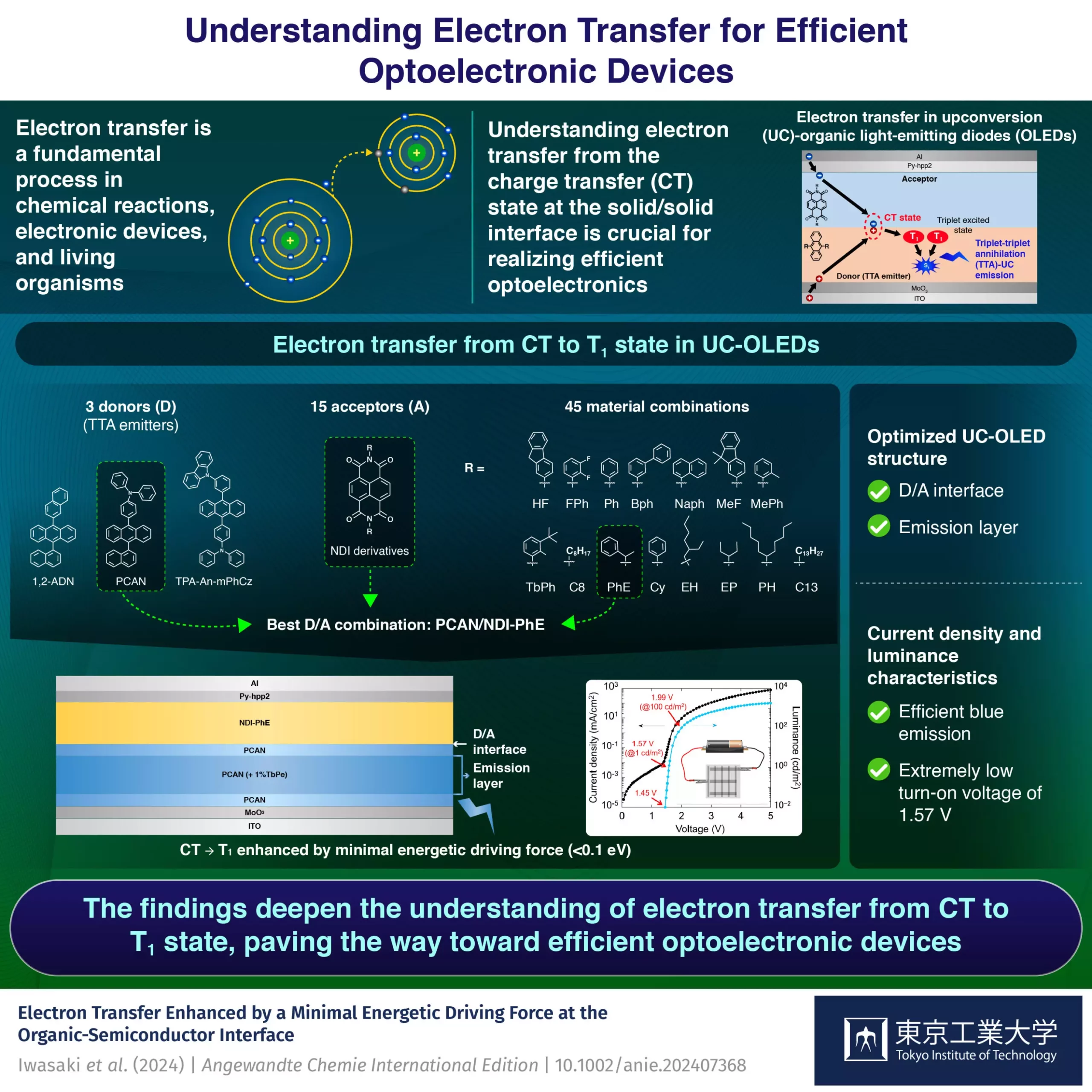Electron transfer plays a crucial role in various processes, including chemical reactions, electronic devices, and biological systems. Understanding the intricate steps involved in electron transfer at a solid/solid interface is essential for enhancing the performance of organic optoelectronic devices such as OLEDs and organic photovoltaics. These devices are known for their lightweight and flexible structure, making them ideal for applications in digital displays and portable electronics.
One of the key intermediate steps in the operation of organic optoelectronic devices is the charge transfer (CT) state, which is a weakly bound electron-hole pair at the donor/acceptor interface. It is vital to grasp the energetic and structural factors influencing electron transfer steps, which can be achieved through experimental studies utilizing the Marcus theory. This theory provides a framework for understanding electron transfer based on energetics and structures. Despite its potential, the analysis of electron transfer has been limited due to various influencing factors.
Recent studies have introduced the concept of upconversion OLEDs (UC-OLEDs) that leverage electron transfer from the CT state to a triplet excited (T1) state via triplet-triplet annihilation (TTA). This mechanism offers the potential to reduce the turn-on voltage of blue UC-OLEDs compared to conventional blue OLEDs, addressing issues such as high driving voltage and low stability.
A team of researchers from Japan, led by Associate Professor Seiichiro Izawa from the Laboratory for Materials and Structures at Tokyo Institute of Technology, delved into the efficiency of electron transfer from the CT state to the T1 state in 45 UC-OLEDs. Their investigation focused on 45 different material combinations, including three anthracene derivatives as donors and 15 naphthalenediimide derivatives as acceptors.
The researchers’ analysis revealed that electron transfer from the CT state to the T1 state is boosted by a minimal driving energetic force, less than 0.1 eV. They also identified a novel donor-acceptor combination, PCAN/NDI-PhE, from the Marcus plots, which led to the development of an efficient blue UC-OLED with an exceptionally low turn-on voltage of 1.57 V. Dr. Izawa emphasized that these findings deepen our understanding of electron transfer mechanisms, paving the way for more efficient UC-OLEDs.
Electron transfer is a fundamental process that underpins the operation of organic optoelectronic devices. By unraveling the complexities of electron transfer steps and leveraging innovative mechanisms like TTA, researchers can enhance the performance and efficiency of these devices. The study conducted by Dr. Izawa and his team sheds light on the importance of electron transfer in UC-OLEDs and highlights the potential for further advancements in the field of organic optoelectronics.


Leave a Reply